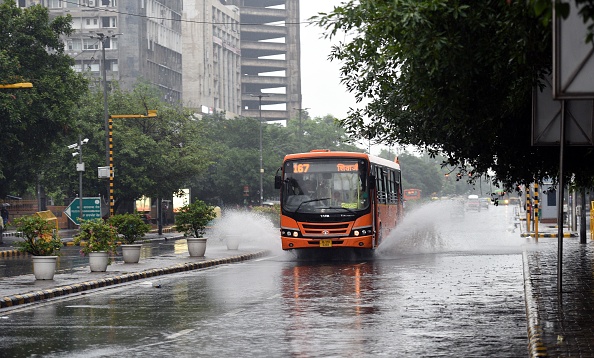Moderate rain in Delhi on Wednesday morning resulted in severe waterlogging in various parts of the city, leading to significant traffic jams. To alleviate the inconvenience faced by commuters, senior police officers deployed additional traffic personnel in the affected areas.
Areas like Rajghat, Mandi House, India Gate, ITO, Yamuna Khadar, and Yamuna Main Bazaar were among the worst-hit regions experiencing waterlogging and heavy traffic congestion.
The Delhi-NCR region also witnessed moderate rainfall the previous day, causing the water level of the Hindon river to rise, which in turn flooded numerous houses and roads in Greater Noida.
The situation was equally concerning along the Yamuna river, with its water level surpassing the danger mark of 205.33 meters. The Central Water Commission reported a peak level of 205.59 meters at 10 am at the Delhi Railway Bridge, indicating the severity of the flooding.
The river breached the danger mark again on Wednesday due to intense rainfall in certain parts of the national capital and upper catchment areas.
The India Meteorological Department (IMD) forecasted generally cloudy skies for Delhi on Friday, with moderate rainfall expected in some parts of the city. The minimum temperature recorded was 26.6 degrees Celsius, slightly above normal, while the maximum temperature was anticipated to reach 35 degrees Celsius.
As for air quality, Delhi’s Air Quality Index (AQI) stood at 71, categorized as ‘satisfactory’ according to SAFAR data. An AQI between zero and 50 is considered ‘good,’ while 51 to 100 falls under the ‘satisfactory’ range. However, the situation may change as per the changing weather conditions.
Residents were advised to stay cautious and be prepared for possible disruptions caused by the ongoing rainfall and waterlogging. (With inputs from PTI)





